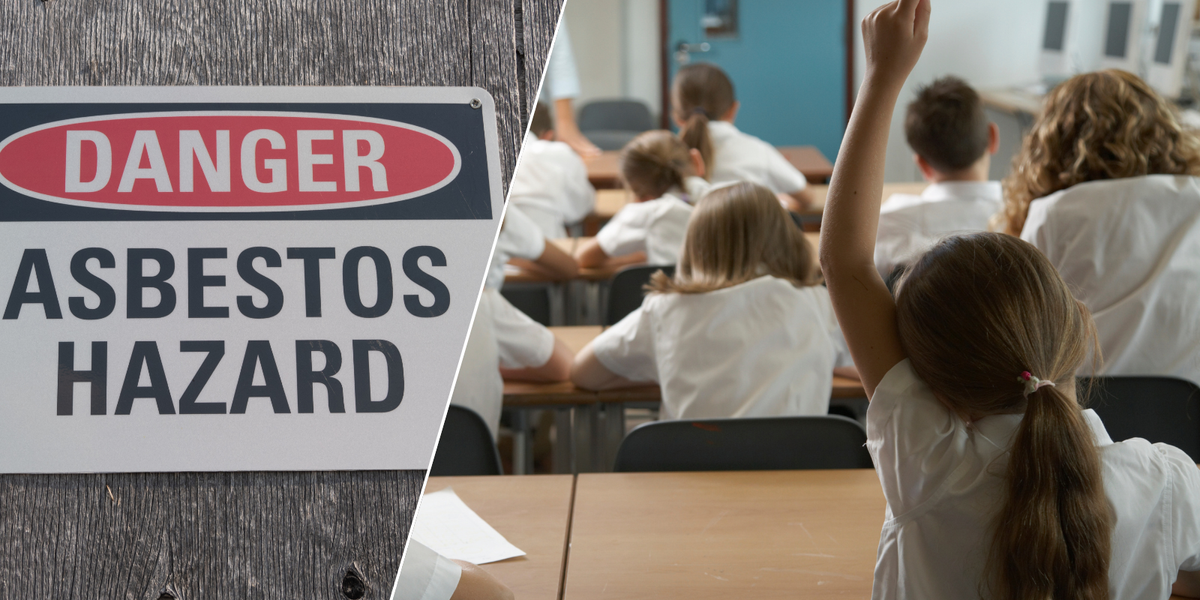The Asbestos Crisis in UK Schools: A Looming Health Catastrophe
Asbestos, a once-popular building material known for its electrical and thermal insulating properties, has become a significant health concern in the UK, particularly in schools. A recent report from the Joint Union Asbestos Committee (JUAC) has raised alarming predictions about the future impact of asbestos exposure on students and teachers, suggesting that hundreds of thousands may ultimately succumb to asbestos-related diseases, including mesothelioma, a deadly form of cancer.
The Silent Killer in Our Schools
The JUAC report reveals that over 21,000 schools across the UK could be at risk due to the presence of asbestos. This toxic material, often referred to as a "silent killer," poses a significant threat as many school buildings begin to deteriorate. Liz Darlison, chief executive of Mesothelioma UK, likened the situation to “a bomb that is slowly exploding,” emphasizing the urgency of addressing the issue before it spirals out of control.
Since 1980, the statistics are grim: at least 1,400 teachers and support staff, along with 12,600 pupils, have died from mesothelioma linked to asbestos exposure. The JUAC report warns that these numbers are expected to rise dramatically over the next 20 to 60 years, as aging school infrastructures continue to expose more individuals to this hazardous material.
The Cost-Cutting Culture and Ineffective Regulations
The JUAC’s investigation, which involved eight education unions, highlights a troubling trend in the management of asbestos in schools. The report states that the current policy—allowing asbestos to remain in place until it is visibly damaged—has created a dangerous environment for students and staff. The report asserts, “Their deaths would be the consequence of ineffective asbestos regulations and a cost-cutting culture that wrongly implies ‘asbestos is safe so long as it is not disturbed.’”
This approach has led to a false sense of security, as many believe that as long as asbestos is undisturbed, it poses no risk. However, lawyer Harminder Bains, who has represented asbestos victims for three decades, argues otherwise. She emphasizes that inhaling even a small amount of asbestos can be deadly, stating, “You don’t have to see visible dust for it to be dangerous.”
A Call to Action: Legal and Political Responses
In light of these alarming findings, Bains has been instructed by the National Education Union to pursue legal action against the government. She argues that schools are “not fit for purpose” and raises a critical question: “We wouldn’t send our children into burning buildings, so why are we sending them into buildings riddled with asbestos?”
The JUAC report, titled "What Is The Real Risk From Asbestos In Schools?", uses official government data to project the potential fatality rate from asbestos exposure. The findings have prompted calls for immediate action from various stakeholders, including Lib Dem MP Munira Wilson, who has long pressured the government to address the asbestos crisis in schools. She stated, “This study is shocking and goes to emphasize the devastating impact of years of neglect on our schools. Every parent should know that when they send their child to school, they will be taught in a safe environment.”
Government Response and Ongoing Inspections
In response to the JUAC report, a spokesman for the Health and Safety Executive (HSE) expressed skepticism regarding the figures presented, stating that their inspection campaigns have shown that the majority of schools are managing asbestos safely. The HSE continues to conduct inspections to ensure compliance with asbestos regulations in schools and other facilities.
Meanwhile, a Department for Education spokesman reiterated the government’s commitment to safety, asserting that they take the well-being of children and school staff “incredibly seriously.” The department expects all authorities to have “robust plans” in place to manage the presence of asbestos in schools.
Conclusion: A National Disgrace
The ongoing presence of asbestos in deteriorating school buildings is a national disgrace, as highlighted by Darlison. The tragic reality is that the failure to adequately address this issue could lead to a “tsunami” of deaths from mesothelioma in the coming decades. It is imperative that parents, educators, and policymakers unite to demand immediate action to protect the health and safety of our children and school staff. The time for complacency has passed; we must confront this looming health crisis head-on before it’s too late.
